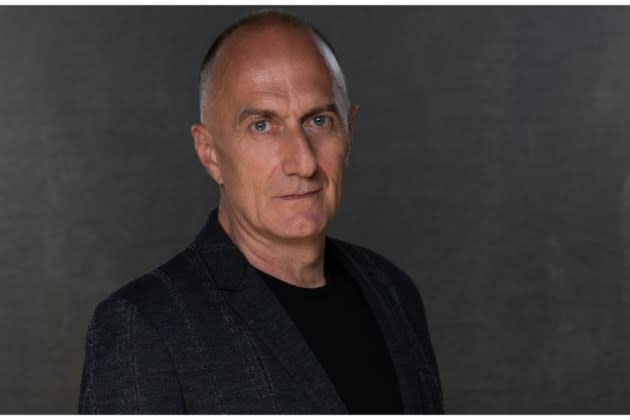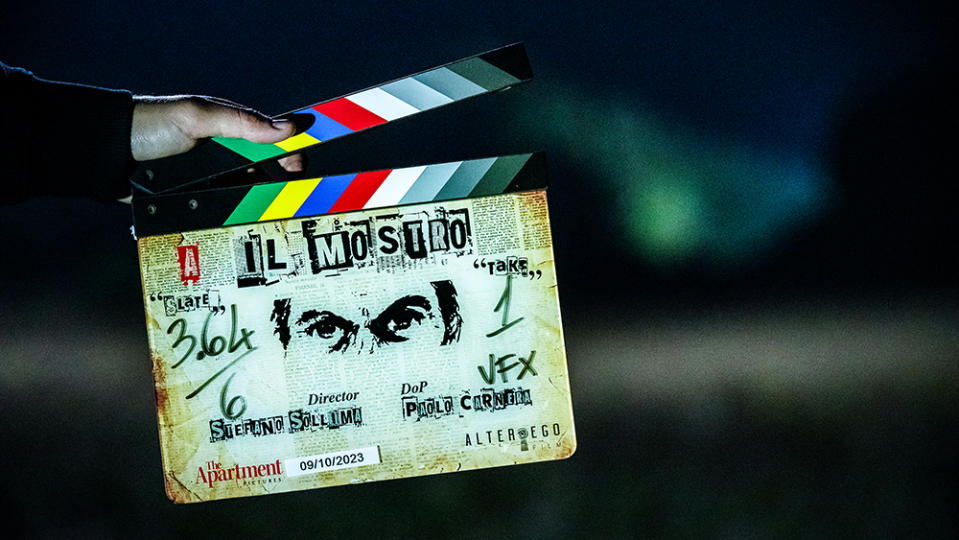Stefano Sollima on Making Netflix’s ‘Il Mostro’ About Unsolved Sex Murders Outside Florence: ‘There Are Lots of Half-Truths’ (EXCLUSIVE)
- Oops!Something went wrong.Please try again later.

Italian genre specialist Stefano Sollima, who is known for gritty TV series “Gomorrah” and Hollywood movies “Sicario: Day of the Soldado” and “Without Remorse,” is shooting Netflix original limited series “Il Mostro” about the string of sex-related murders that took place outside Florence from the late 1960s to the mid-1980s.
“Il Mostro,” which translates as “The Monster,” is the moniker given to the alleged serial killer who committed eight double murders, preying on couples parked in cars in secluded places around Florence. The still unsolved case marks one of the longest investigations into the most brutal serial killings in Italy’s history.
More from Variety
Acclaimed Animator Anca Damian Lines Up Live-Action Feature 'First People on Earth' (EXCLUSIVE)
Italian Content Production Worth $1.9 Billion as U.S. Streamer Investments Grow, Says MIA Report
Casting details of “Il Mostro,” which started shooting on location earlier this month, are still being kept under wraps. The four-episode Netflix Italian Original is being directed by Sollima, who co-wrote the high-end series with Leonardo Fasoli, his collaborator on “Gomorrah” and “ZeroZeroZero.”
“Il Mostro” is being produced by Lorenzo Mieli’s The Apartment, a Fremantle company, and Sollima’s AlterEgo shingle.
Sollima spoke exclusively to Variety about his rigorous approach to reconstructing what he calls “a national tragedy” that occurred when the 1960s sexual revolution caused a major culture clash in Italy.

This is a well-known Italian cold case that’s right up your alley. What drew you to the story?
I’ve been delving into everything about this case for about a year, and it’s just a very powerful story. It’s tricky and delicate, of course, because it’s a national tragedy with plenty of victims. It’s also an unsolved case, though many attempts have been made to solve it. To this day a real monster, a real single culprit for all 16 killings, does not exist. There are lots of half-truths. But what most intrigued me is that it can be the tale of Italy’s transition from when it was a country with a peasant – or rural – culture and the disruption that occurred at the end of the 1960s when sexuality became perceived as a means of expression. The moment when these two cultures, archaic and modern, collided. That’s what struck me the most about this story.
So it’s the human side of the story.
The other thing that struck me is the density of various types of humanity that this story comprises over the course of almost 20 years of investigations. There are lots of powerful characters and their stories deserve to be told. The stories of the many people that — in different roles, as either victims or perpetrators — had a role in this national tragedy.
How did you manage to wade through the huge amount of material?
As a writer, the massive amount of transcripts and documents from many judiciary investigations commands a sort of reverential respect. We are telling a story that is very complex and does not have a resolution that offers any type of certainty in the finale. What drove me to plow through all this was the basic idea behind the series which is: to tell a story based solely on the facts. On reality. We don’t want to smear the story with any kind of fictionalization or interpretation of the facts on our part. With great humbleness I am trying to tell a very complex story, by just telling the truth. Nothing else.
In a nutshell, what are the main elements of “Il Mostro.” Who are the main characters?
This is a story that takes place between 1968 and 1985 in which there are 16 so-called “main” victims and a huge number of suspects and indictments. The bare bones elements are: Eight double homicides with one Beretta 22. And the case is still unresolved. That’s the real hook.
How is the series structured narratively?
What I can tell you is that we chose to not go the purely linear chronological route. Paradoxically, if you read this story chronologically, it’s less clear than if you approach it from other angles. That’s because today in hindsight, compared to the first investigation in 1968, you can have the benefit of a huge amount of accumulated information. This information allows you to make a much more accurate portrayal than investigators did at the time. It’s as though having the benefit of history and the massive amount of information allows you to tell more of the truth.
Tell me about the tone, the mood, the visual aspect.
The tone is basically that of a true crime within which there is space for the humanity of the characters. The series will entirely be a period piece. We have lots of consultants who will allow us to make a very accurate historical representation of what happened. The mise-en-scène will have a meticulous, documentary-like approach. And Paolo Carnera [“Gomorrah,” “ZeroZeroZero”] will handle the cinematography. The idea is to tell a sumptuous story of those years but with a rigorous narrative approach.
Will the audience want to try to figure out who did it?
Absolutely, yes! Our job as creators, as story tellers, is not to provide answers. It’s to ask the right questions. Each spectator will be able to form their own idea as to who did it. And, more importantly, will be able to ask questions they never thought they would be asking. And that don’t necessarily answer the question: “Who did it?” This will make the narrative even more interesting.
Did any new elements surface about the case that are not already out there?
No, because many of the new elements that surfaced over the years didn’t turn out to be valid. But they stand as testimony to the fact that this case has continued to generate interest. Everything we are telling is what has been ascertained as having actually happened.
This interview has been edited and condensed for clarity.
Best of Variety
Sign up for Variety’s Newsletter. For the latest news, follow us on Facebook, Twitter, and Instagram.

